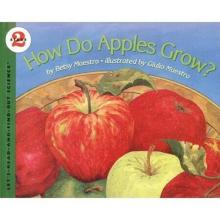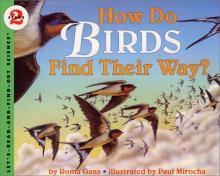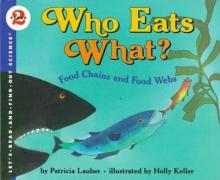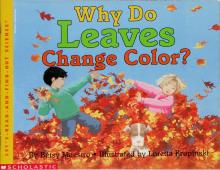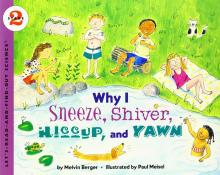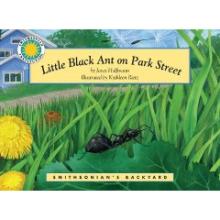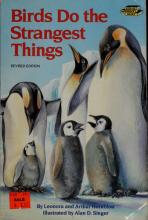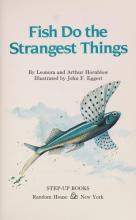Science Elementary
How do Apples Grow?
The development of apples is presented, from leaf and flower buds in the winter, thru blossoms in the spring, pollination and the actual growth of the apple. In addition to beautiful scenic pictures of trees in blossom and bees pollinating the trees, there are more technical drawings which illustrate the parts of a flower, show flowers in the different stages of development and show the connections between the original blossom and the ripe apple. The text also introduces some important terminology that will be useful in later science studies (pollen, stamen, pistil, etc.). Overall, a very nice and useful book.
How do Birds Find Their Way?
A nicely illustrated and interesting look at the amazing phenomenon of bird migration, what we know about how migration works and some various theories about details that are still being studied. Includes a chart of how high various birds fly.
Who Eats What? Food Chains and Food Webs
This book explores the notion of various plants and animals that are linked together based on "who eats what." Children will learn about some simple food chains such as – leaf, caterpillar, wren and hawk. They also see how one plant or animal can belong to several food chains and that members or these related food chains (food webs) have a certain amount of dependence on each other. The text goes on to explain, through an example of a problem with over-hunted otters around the turn of the century, that when part of a food chain is disturbed, the other members will also be affected. There are some mild "environmental" messages in this text which our family used as an opportunity to discuss good stewardship of what God has given us.
Why Do Leaves Change Color?
Our family has really enjoyed this book which explains why leave fall off the trees before winter, where the different colors come from, how weather affects the brilliancy of the colors and lots more. It's written in a very simple manner, so that it's quite understandable even for preschoolers or kindergarteners, and yet it contains substantial information so that even moms (like me) realize that they don't know everything : ) You'll also find labeled pictures of the leaves from different kinds of trees, a cross section of a leaf, an explanation of how trees make food, and how to make leaf rubbings and preserve leaves by ironing them between sheets of waxed paper.
Why I Sneeze, Shiver, Hiccup and Yawn
A simple book with cartoon-like illustrations that explains reflexes and the related workings of the nerovus system – focusing, of course, on those four topics mentioned in the title. The story also invites children to try out a few simple experiments to observe reflexes for themselves. A "Find Out More" section provides "Things to Think About", additional "Test Your Reflexes" ideas and "Fun Facts".
Little Black Ant on Park Street
Birds do the Strangest Things
Twenty-two stories of the natural but strange and fascinating behavior of various birds. The text covers ostriches, hummingbirds, kiwis, loons, peacocks, emperor penguins, woodpeckers and much more. The text is somewhat lengthy (approx. 12-20 lines per page), but in fairly large print and at a fairly easy reading level. My children find this book completely fascinating. Part of the "Step-Up" series which includes "Meet George Washington" et al.
Fish do the Strangest Things
An informative and enjoyable collection of stories about some very interesting and remarkable fish – such as the Deep Sea Angler, the Archer Fish, the Lungfish, the Puffer Fish and the Mud-Skipper. Although the illustrations aren't fabulous, this book and others in the series have been real favorites with my children. The stories are engaging, fairly short (two to three pages with rather large type) and the content is very appealing. We discovered this book when my daughter was five and for her it became a starting point for a real interest in Sea-Life in particular and Science in general.

